brother-in-law of my 1st cousin 3x removed
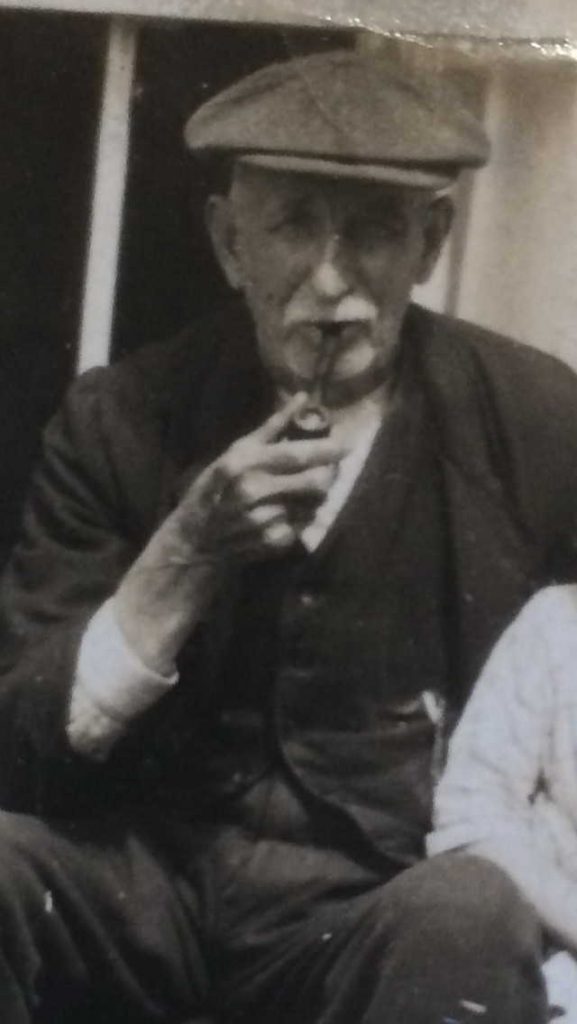
Son of Thomas and Hannah Gibson. Thomas was a butcher on Bridge Lanes, Hebden Bridge and had also lived at Winters (see post). As was common at that time their first son was given Hannah’s maiden name, Stott as his Christian name. He was baptised on May 6, 1855 at the parish church in Hebden bridge. 8 siblings were to follow. 1861 sees the family living in Bridgegate, the house before the White Lion on the census route. By 1871 the family have moved to Old Gate and while his dad continued to run the butcher’s shop Stott has now joined the vast numbers of fustian cutters employed in the town.
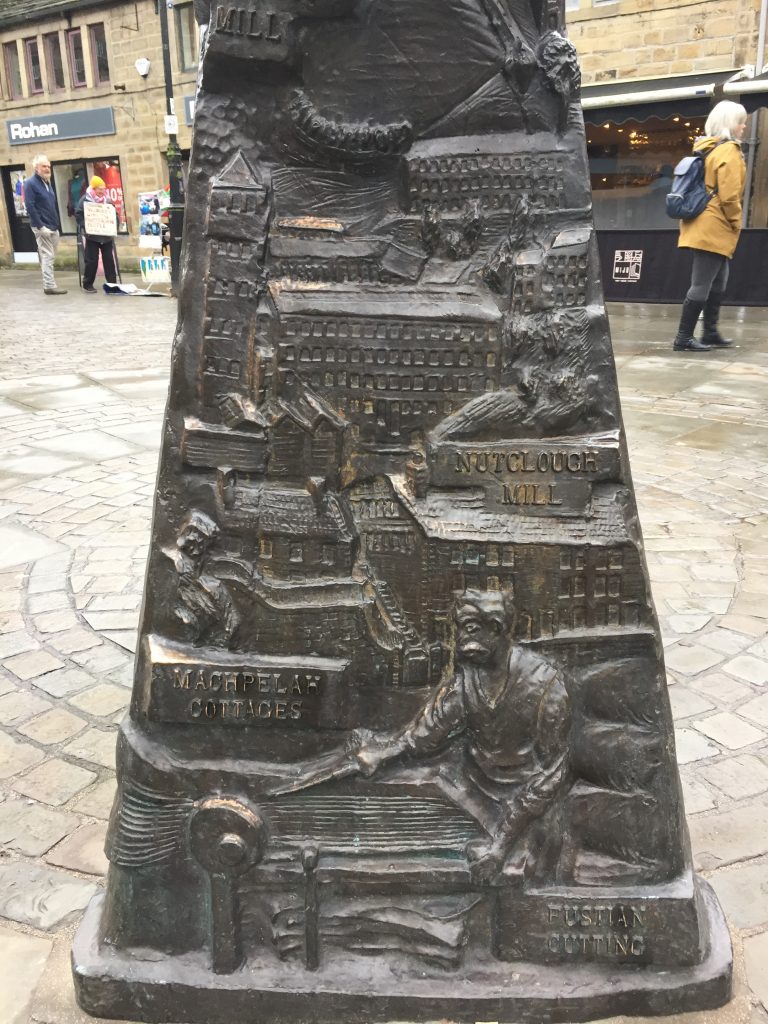
On September 24, at the age of 19 Stott married Sarah Ellen Thomas at Halifax minster. Only her mother is named and on her marriage certificate there is a blank space for her father. If her father had been deceased he would have been named and then ‘deceased’ added. Stott and Sarah had 10 children. A month after their marriage they had a son who was baptised in October but died the following month. He’s buried at St James’s.
Two years after their marriage Stott gets caught up in a fight that appears to have been sparked by rivalry between the Heptonstall and the Hebden Bridge brass bands!
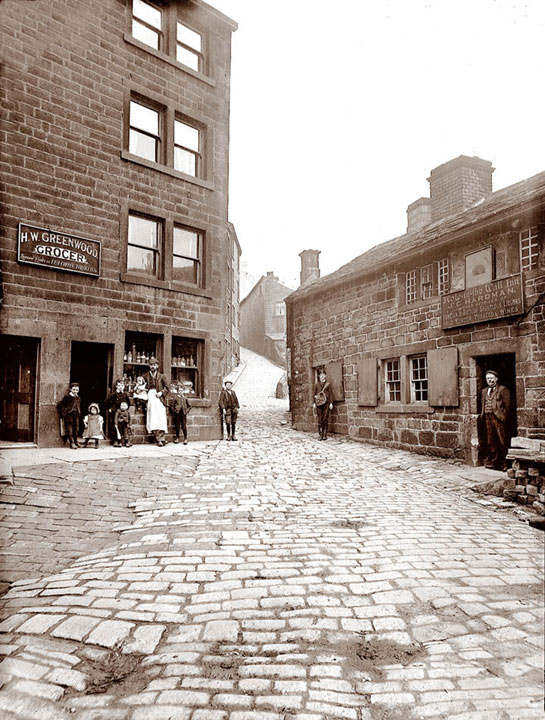
Todmorden & District News – Friday 29 September 1876
DISCORD AMONGST MUSICIANS —UTTLEY V. SUTCLIFFE—Mr. Craven appeared for plaintiff, and Mr. Ashworth (Rochdale) far defendant. Mr. Craven in opening the case said the matter arose out of an affray between the members of two local bands.- His Honor: Two bands of music ?—Mr. Craven: Yes, but on this occasion not of a very harmonious character—Mr. Ashworth: There was too much drumming for much harmony. (Laughter).— Mr. Craven, continuing, said that on the 22nd July certain parties connected with the Heptonstall and Hebden-bridge brass bands were at the Shoulder of Mutton inn, and a dispute arose about the musical abilities of each band. On leaving the Shoulder Mutton Inn a fracas took place amongst some of them. Soon after this the defendant got hold of his client, and threw him a distance of four or five yards, the result of which was that his ankle was dislocated; whilst on the ground the defendant got upon him and struck him in the face. His client claimed 6.11s.6d damages; he was stone mason, and was away from work two weeks; his wages were 32s a week; he paid 7s 6d. for medical assistance, and claimed 3 pounds for the pain and suffering which he had undergone. –
Plaintiff on being examined said: I was at the Shoulder of Mutton Inn on the night of the 22nd of July; I had one glass of beer there, and I had previously had two glasses of porter and a bottle of cider during the day. When I left the Shoulder Mutton Inn I was making my way home, and went over the Old bridge with James Simpson and Thos. Sutcliffe, whom I accompanied to Buttress Bottom. I did not see the defendant; there were a great number of people about. The Heptonstall band had been to a demonstration at Todmorden; there was a majority of the band at the Shoulder of Mutton Inn. I had been in company with a man of the name of Stott Gibson, and when I got to Buttress-bottom I saw him on the door-step of his house, and someone was bothering him, and I was going to protect him when the defendant got hold of me by the collar and threw me a distance of four five yards to the ground; he then got on top of me, and gave pair of black eyes; he hit me with his fist when I was down, and there were three or four persons kicking me at the same time.I never saw the defendant after. I went home by the roadside as best I could, and on the morning following I called in a doctor, who said the ankle was put out. I was kept sway from work two weeks in consequence of that injury. I paid my doctor 7s 6d. I had very much pain during the time of my illness. -I strictly followed out the doctor’s orders. I can swear that defendant was the man who threw me.—
By Mr. Ashworth; I had been at the Shoulder of Mutton about twenty minutes; I had one glass there. I had been at the Hole-in-the-wall and the Swan Inn before going there;
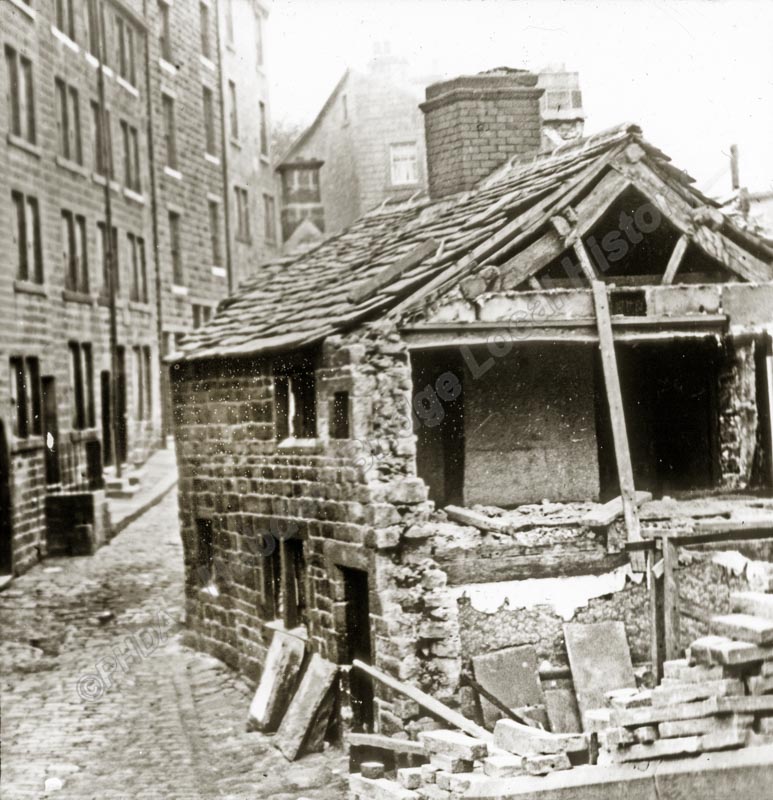
I had two glasses of porter and a bottle of cider. I went work that day at half past seven, and worked til 12 o’clock during which time I never tasted intoxicating drink. Stott Gibson had been with me at the Hole-in-the-wall and the Swan Inn, and he to went to the Shoulder of Mutton with me. He was stirred in drink at the last-named place, but not drunk. I play in Hebden Bridge band; Stott Gibson also plays in the same band. The defendant is not a musician that I am aware of; he lives at Nutclough. When the Heptonstall band came up my friend did not make any remark that I heard; he did not say he would have a “b—row.” He left the public house when I did. There was a row outside, which took place on the other side of the bridge. It was not one continuous fight from the Shoulder Mutton to the bottom of Buttress. Within 5 or ten minutes after that the row between the defendant and myself began. I was going to where the row was taking place. I did not hear defendant complain of someone striking him; I had not struck him. We were both on the ground together. He threw me four or five yards, and followed close upon me; I never struck or offered to strike anybody. I got home without any assistance a little after 11 o’clock. I took no part to the general scuffle. The scuffle was between the members of the Heptonstall and the members of the Hebden-bridge bands; I am a member of the latter, and so is Stott Gibson, but I took no part the scuffle. “Straight-up” was having a row with Stott Gibson. I attended a brass band contest at Todmorden on the following Saturday, but I was not able to work; I went to the contest in a spring cart. I was never drunk during the time of my illness. I did not throw on to any club.—By Mr. Craven: I went to try to work on the Monday following, but I could not stand at the bench. I received no additional Injury through attending the contest.—Thomas Naylor was called in supporting the plaintiff’s evidence, and spoke to seeing the parties at the Shoulder Mutton Inn, and afterwards seeing Stott Gibson home; there were lots of scufflings going on but he could not swear to the assault committed upon the plaintiff as he did not recognise either of the parties in the general scuffle. -Mary Hannah Southwell said: I know Thomas Uttley; I saw him on the night of 22nd of July at the bottom of Buttress between half past 10 and 11 o’lock.there were a good many people about. I saw a young man take hold of Uttley and throw him sideways; I did not see him again that night. I did not know who it was that there him – should I know him if i saw him again; I cannot swear that it was the defendant. I knocked down accidentally in the affray. –
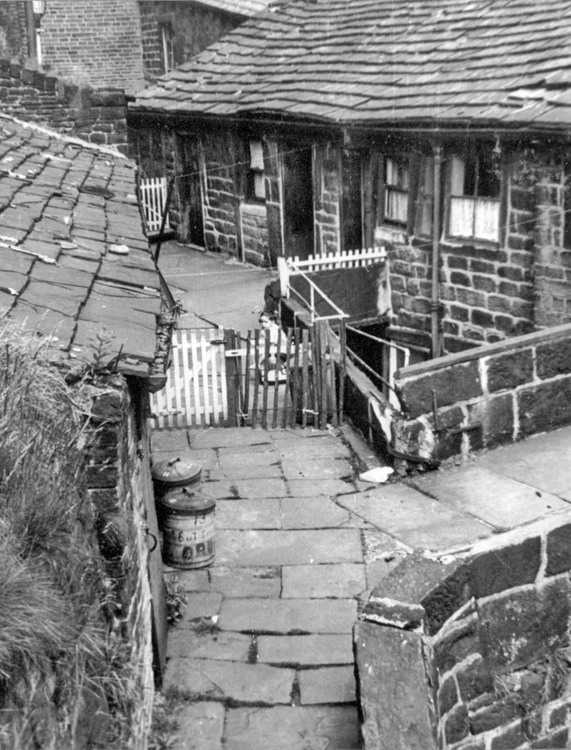
By Mr Ashworth: There was a good deal of jostling and fitting going on; they did not seem to be behaving like Christians to one another. – Jonathan Whitely said: I was at sale on the Monday following the affray, and defendant was there. I called him one side and asked him about it, and he said he had thrown Uttley down, but Uttley struck him first. I told him what in jury Uttley had sustained and he expressed sorrow. – This being the plaintiff’s case Mr Ashworth addressed the court for the efense, after which he called upon the defendant Richard Sutcliffe, who said: On 22nd of July I was at the shoulder of MuttonInn, and that day there had been a demonstration at Todmorden where the Heptonstall band had been engaged. . I went to the Shoulder of Mutton Inn at 10 o’clock. I was quite sober. The plaintiff Thomas Uttley was there, and appeared to be sober.I did not see Uttley leave the house. I saw him near Stott Gibson’s house: he was then rushing towards Gibson and I stopped him and was going to tell him that Gibson’s wife was in charge of him when he turned round and struck me in the chest. I then got hold of him and we both went to the ground together. No-one separated us. I never was on top of him. I left him at the end of Royd Terrace.

I saw Whitely on the Monday following and he told me of Uttley’s in juries but I did n to express my sorrow. I told him that Uttley struck me in the breast and then got hold of him. I did not know that he was hurt until whitely told me. Uttley struck as hard as he could. –
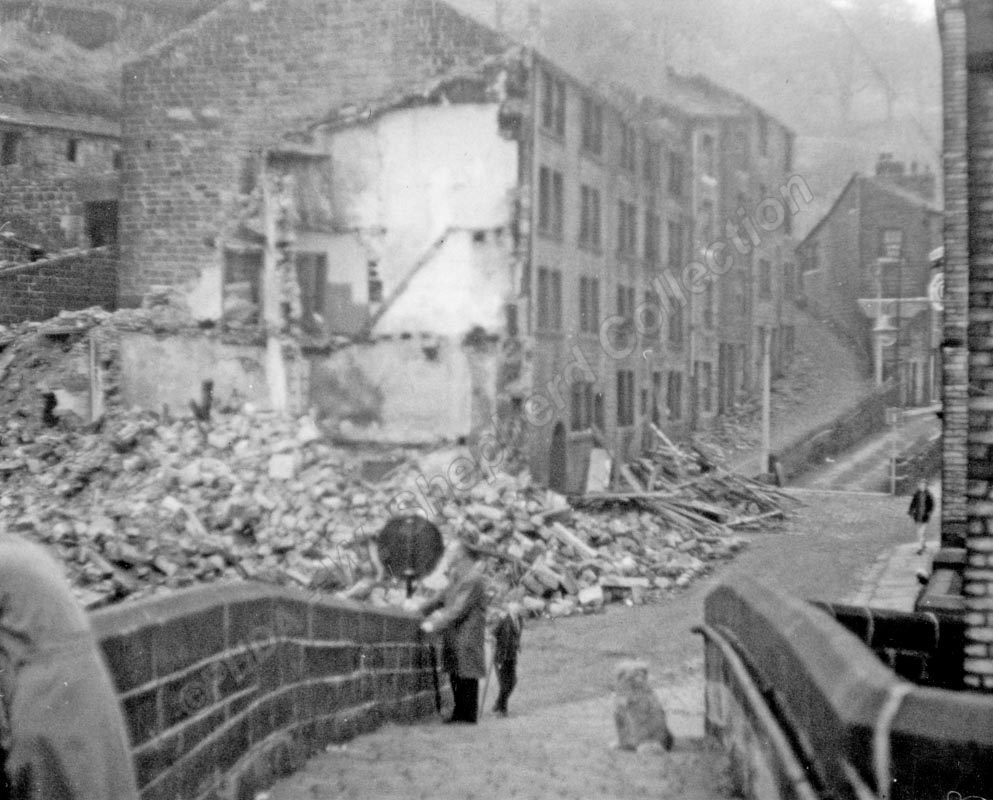
By Mr Craven: I got up and left him lying on the ground. I did not wait to see whether he got up or not – I was not aware that I had injured him. Stott Gibson shouted the Heptonstall band whilst playing. (?) I am n to a member of the Heptonstall band but my sympathies are with that band. I stopped Uttley to tell him who it was who was getting Gibson into the house. The blow was intentionally given to me; I did not strike to to my recollection whilst on the ground. –

William Sutcliffe corroborated defendant’s evidence as to the plaintiff striking first. Mr Ashworth intimated that he had other witnesses to call if his Honor was not satisfied. His Honor said he did. Not think the plaintiff had any right of action against the defendant, and ordered a nonsuit.
The family were now, 1881 living at Buttress Bottom, Hebden Bridge and in the 1891, 1901 and 1911 census they are #6 Buttress Brink.
Sarah died in 1917 and so far the only Stott Gibson’s death record I can find is in Conway, Wales in 1925 but that seems unlikely. I did, however manage to locate photos of Stott’s children from a relative on Ancestry.com

Sarah Elizabeth 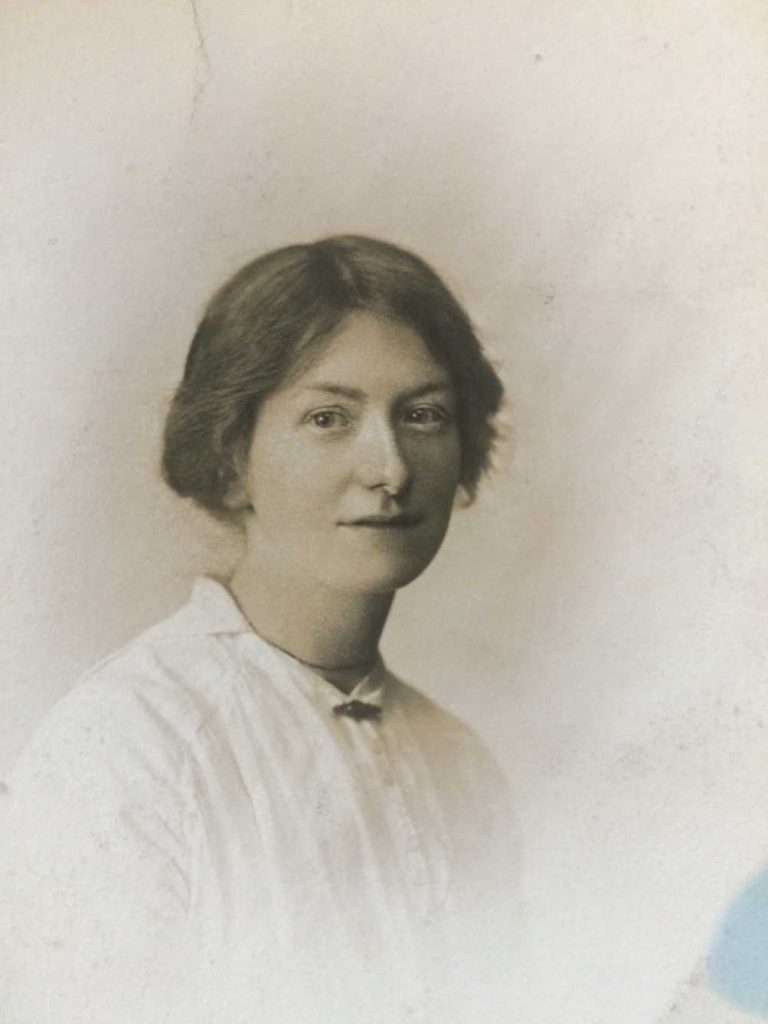
Ruth 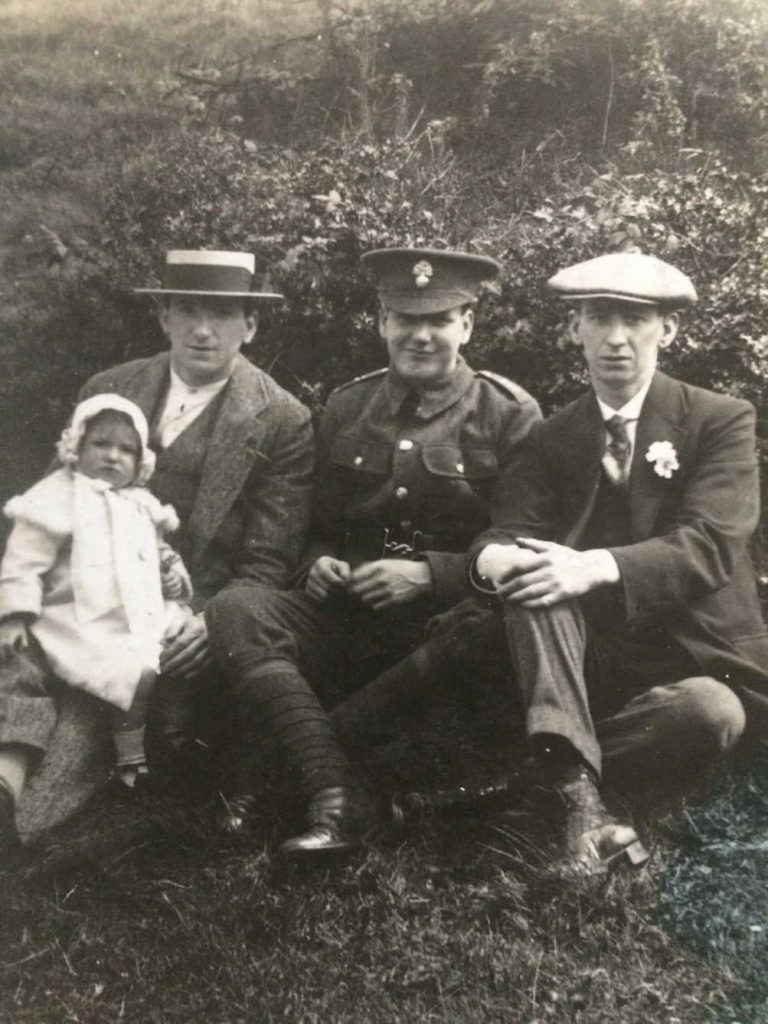
Harry (with baby Enid), Thomas and William
Stott’s son, Arthur, was killed in WW l in 1916 the day after his brother, William was killed. 8 months later their brother Ben was also killed. Today I was invited to go to see the new Oscar nominated movie ‘1917’ but I declined.

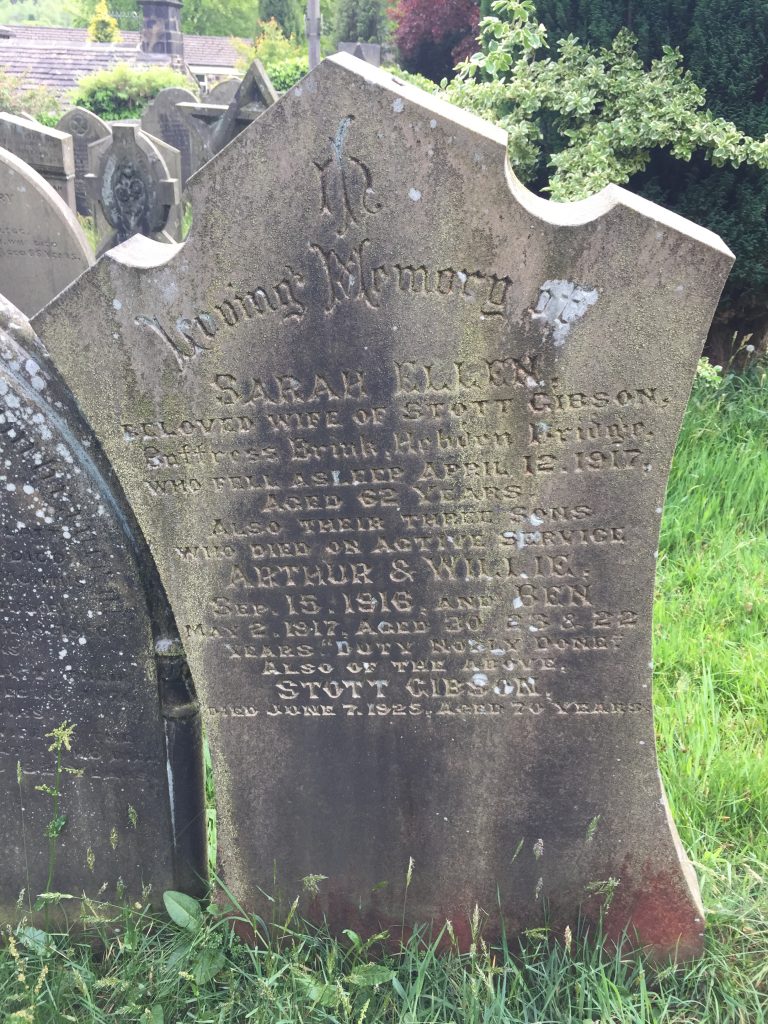

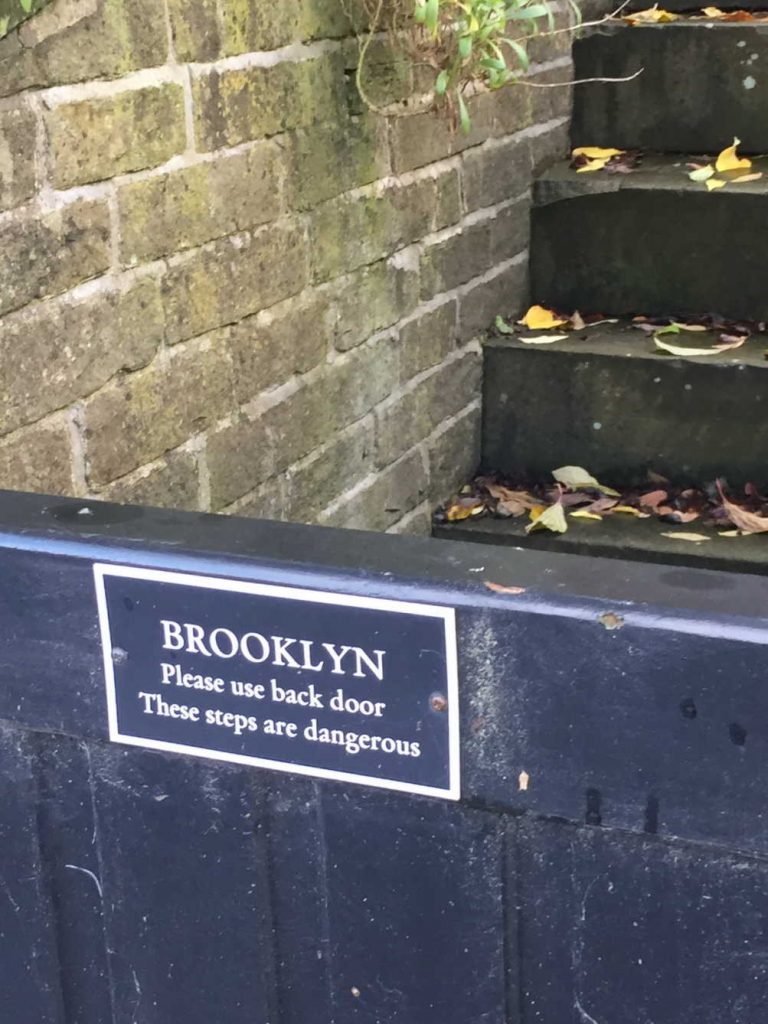
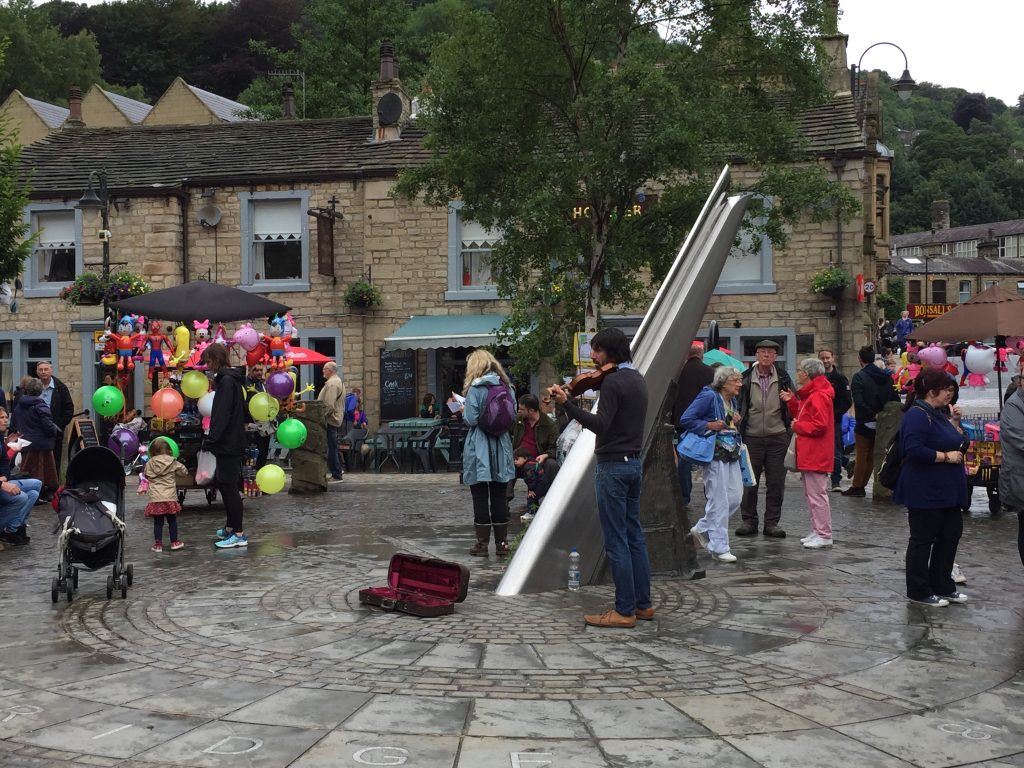

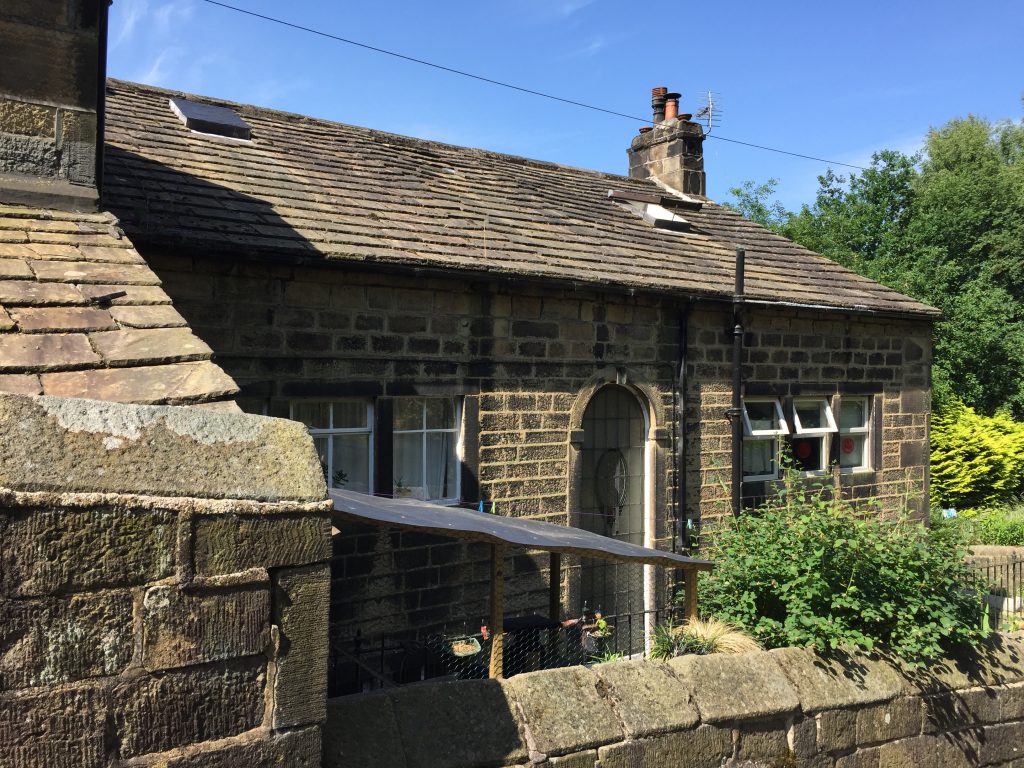
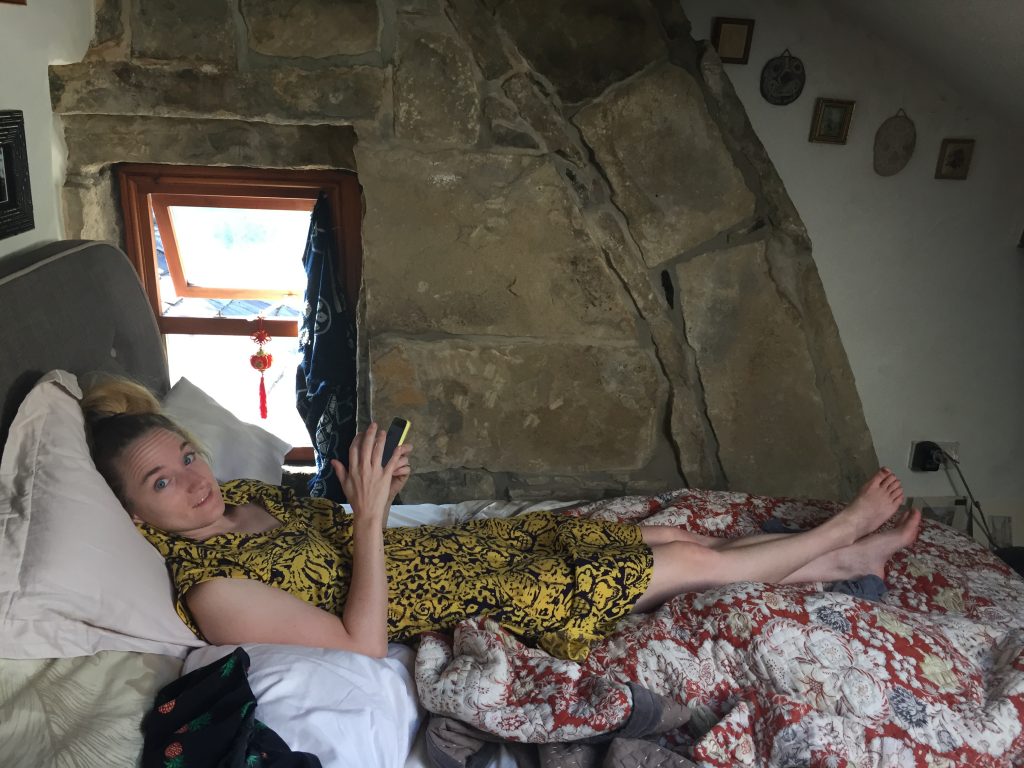
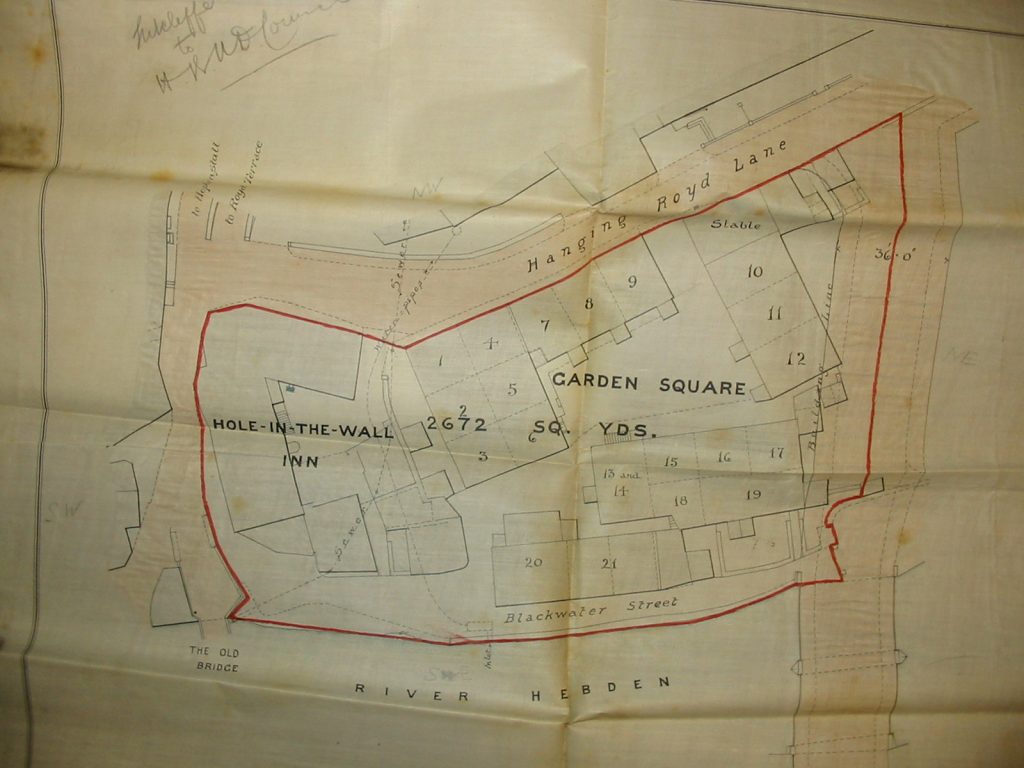
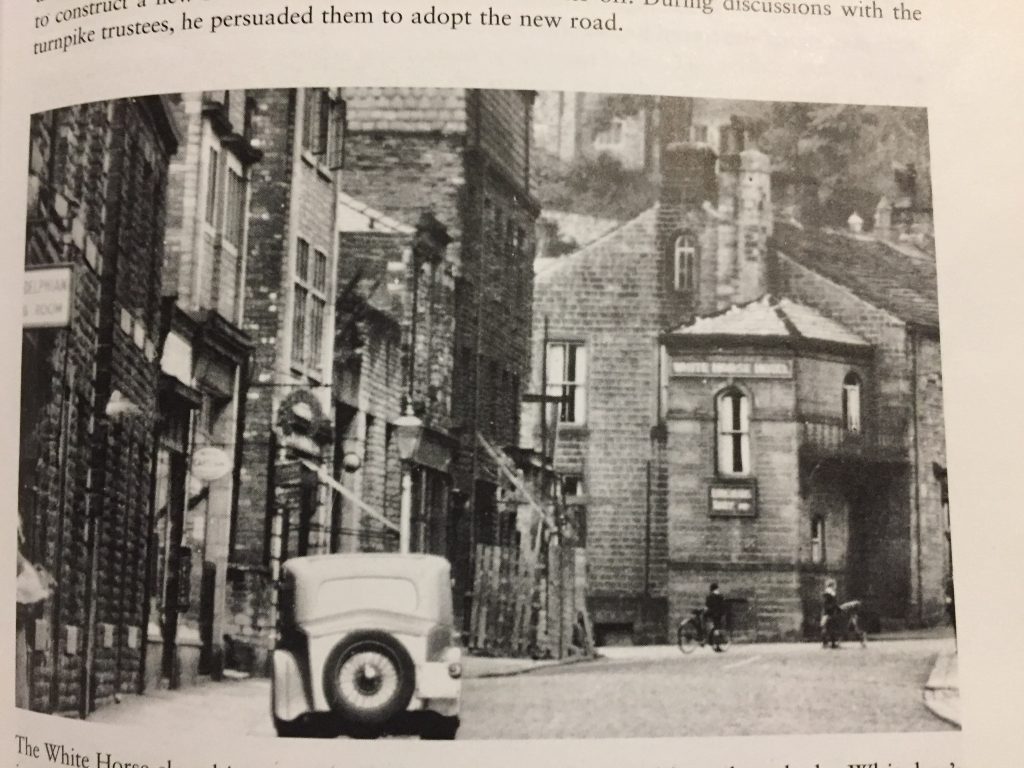
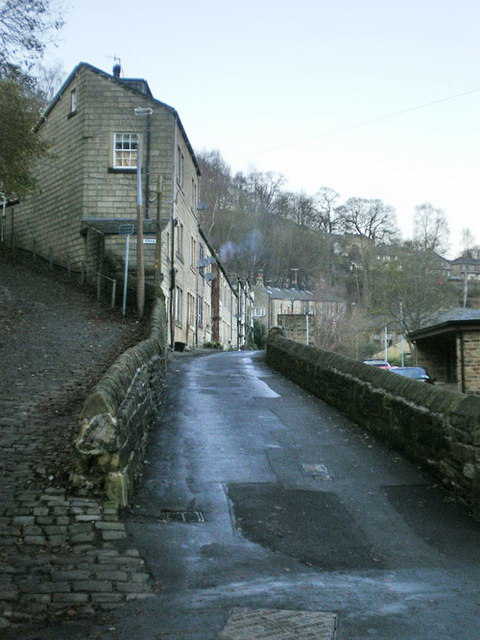




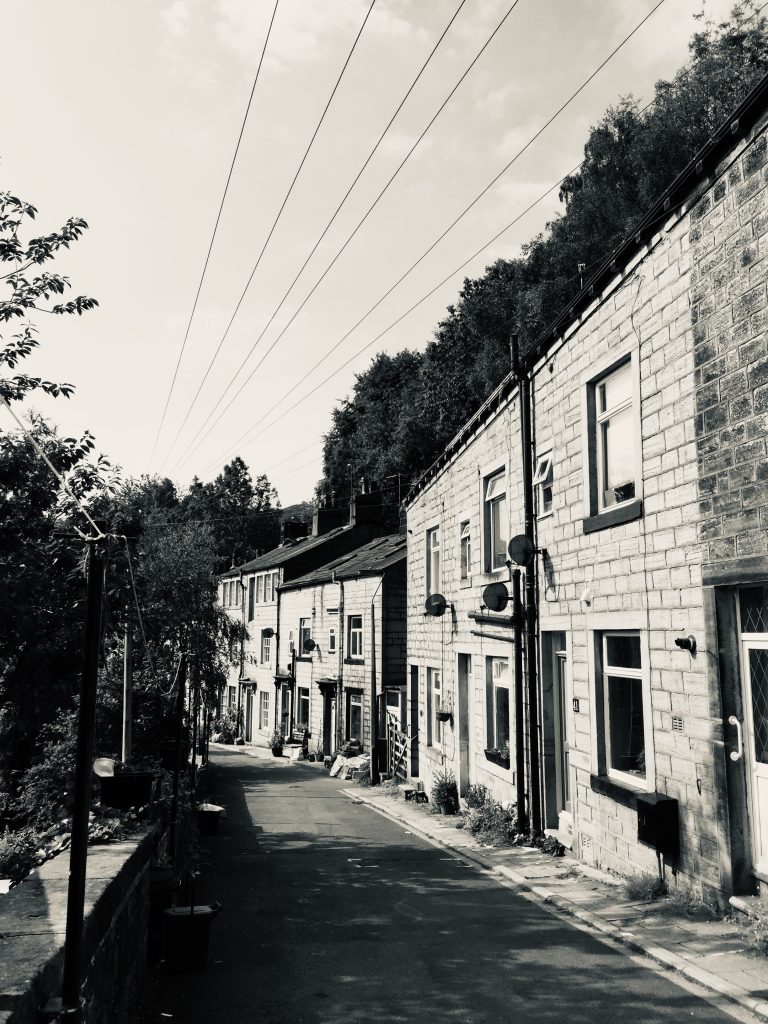
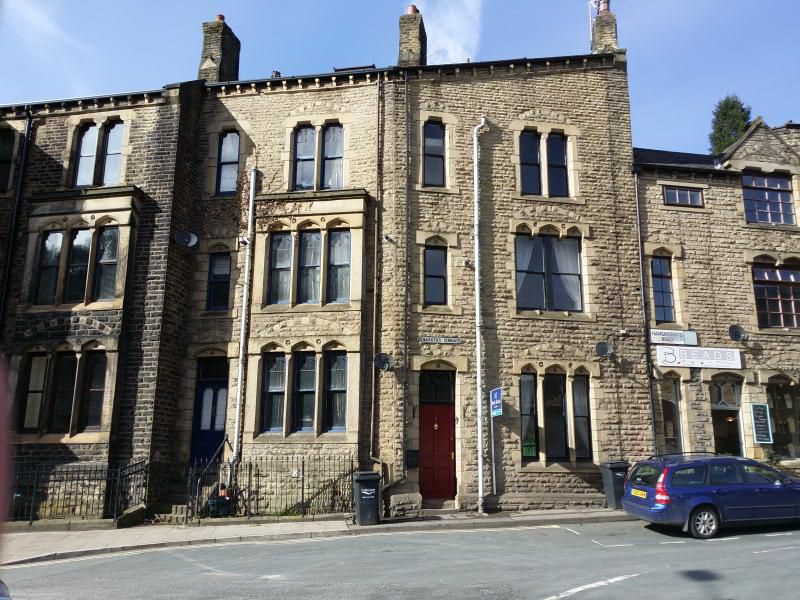
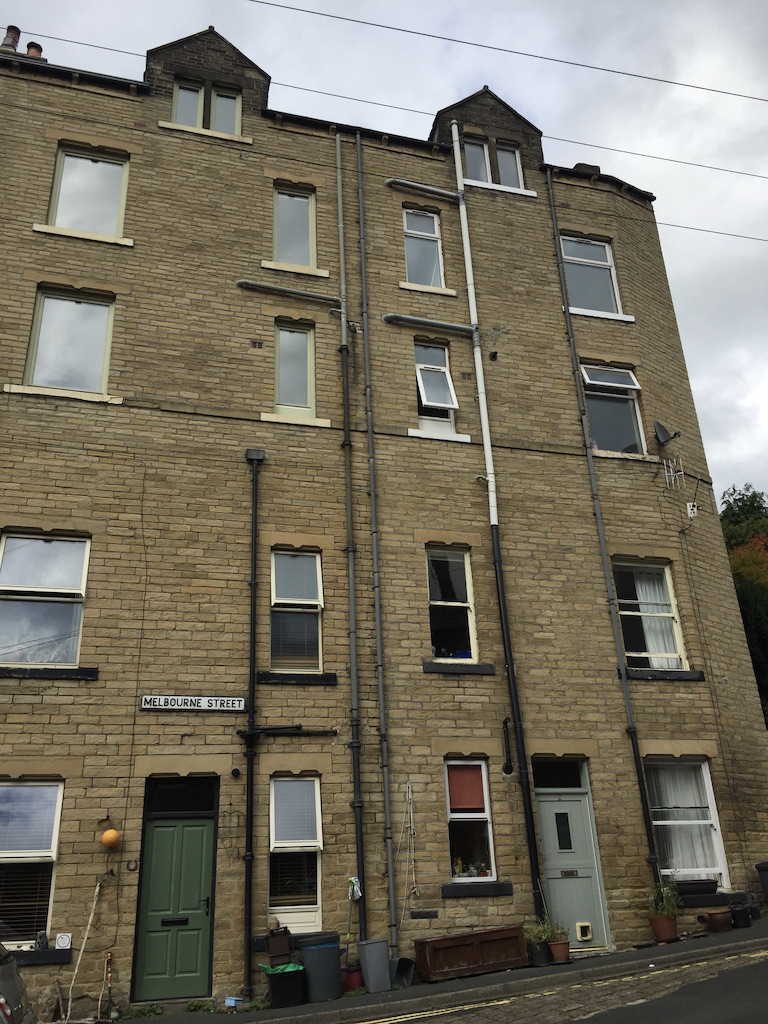
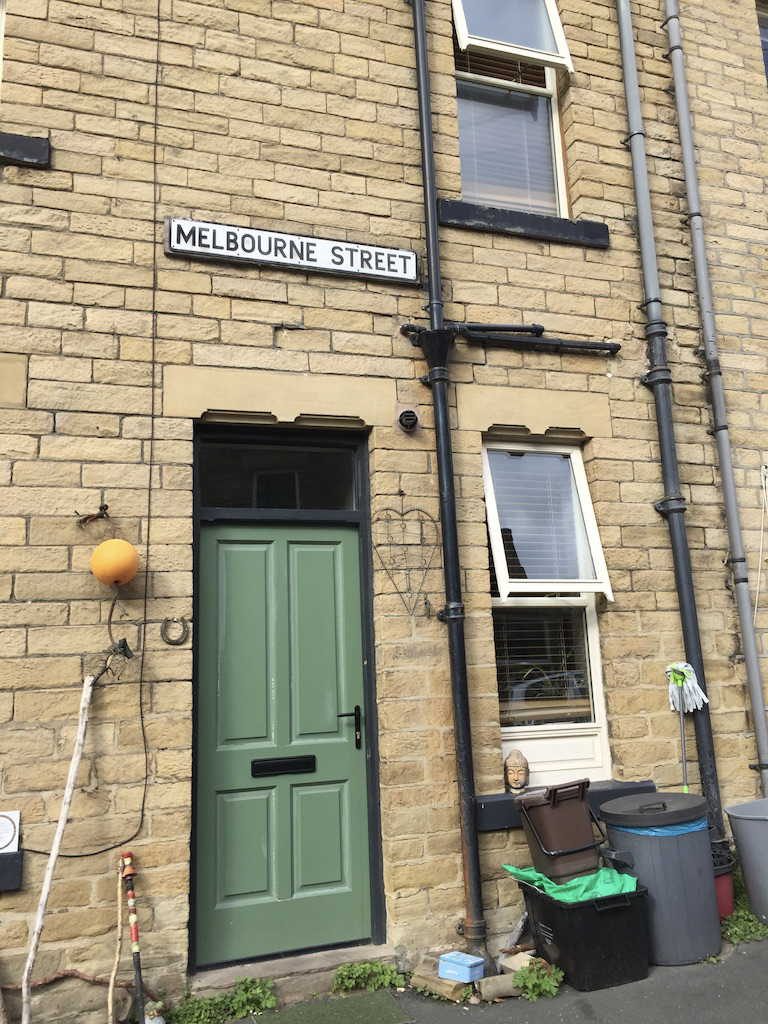

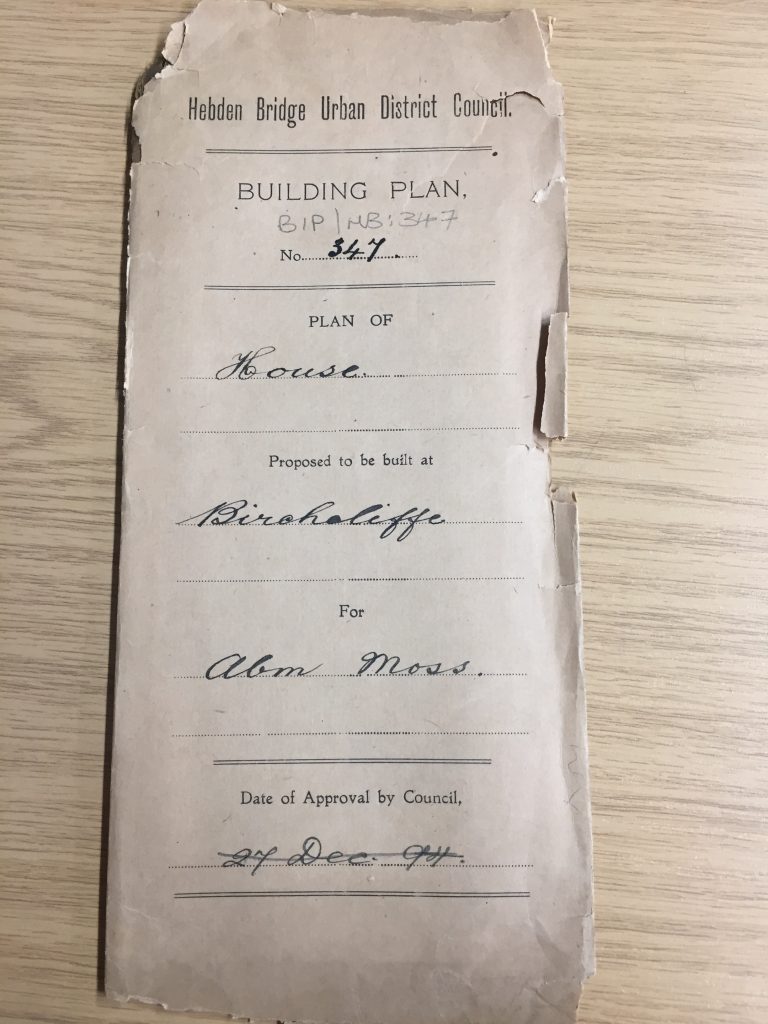
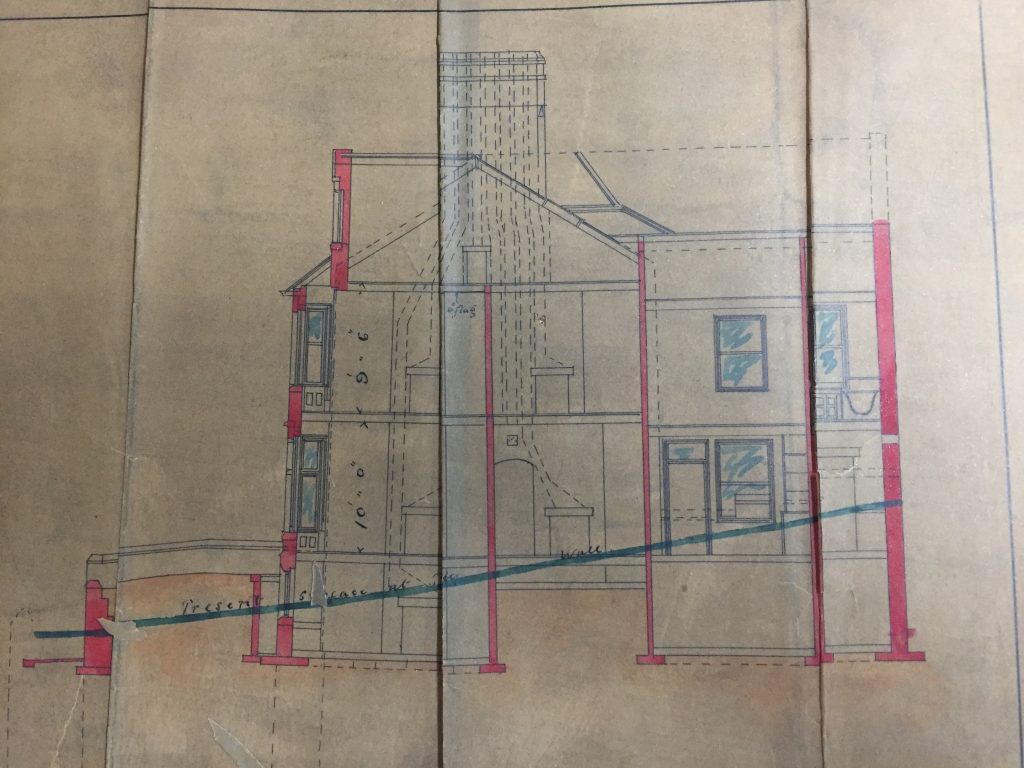
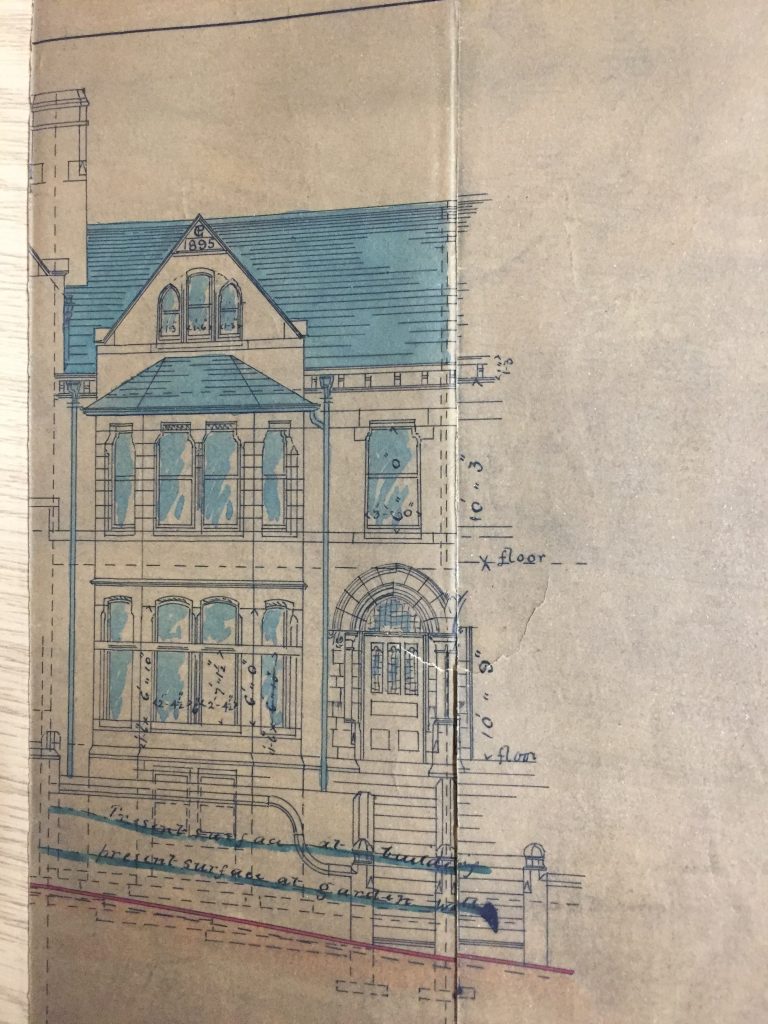
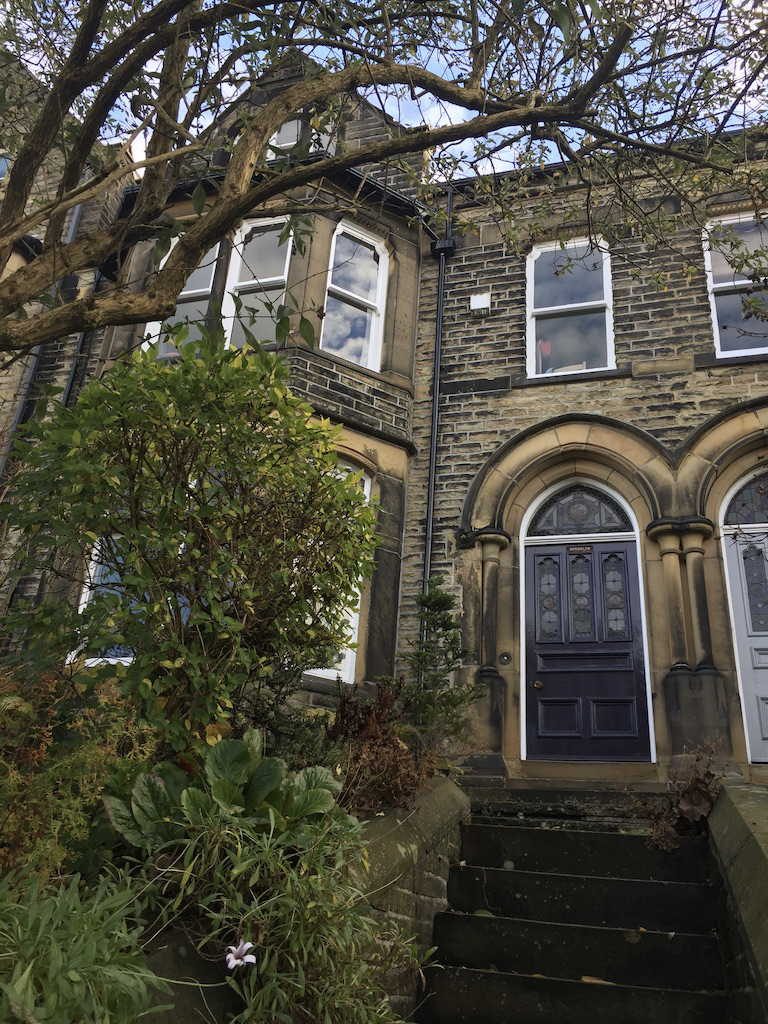
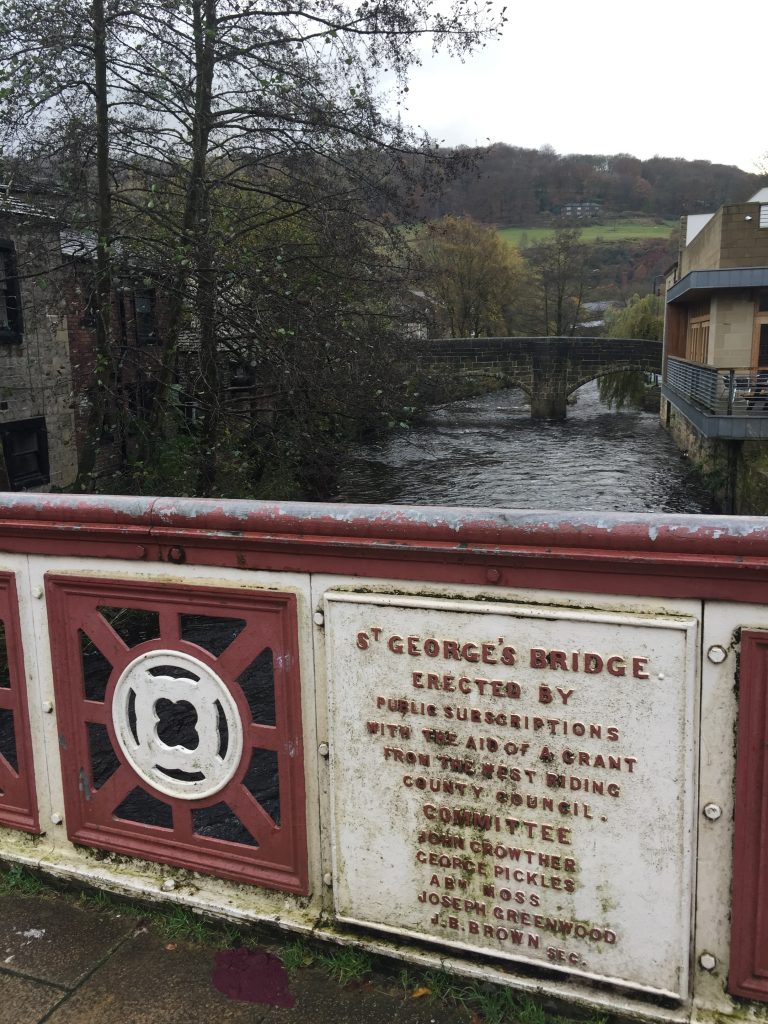
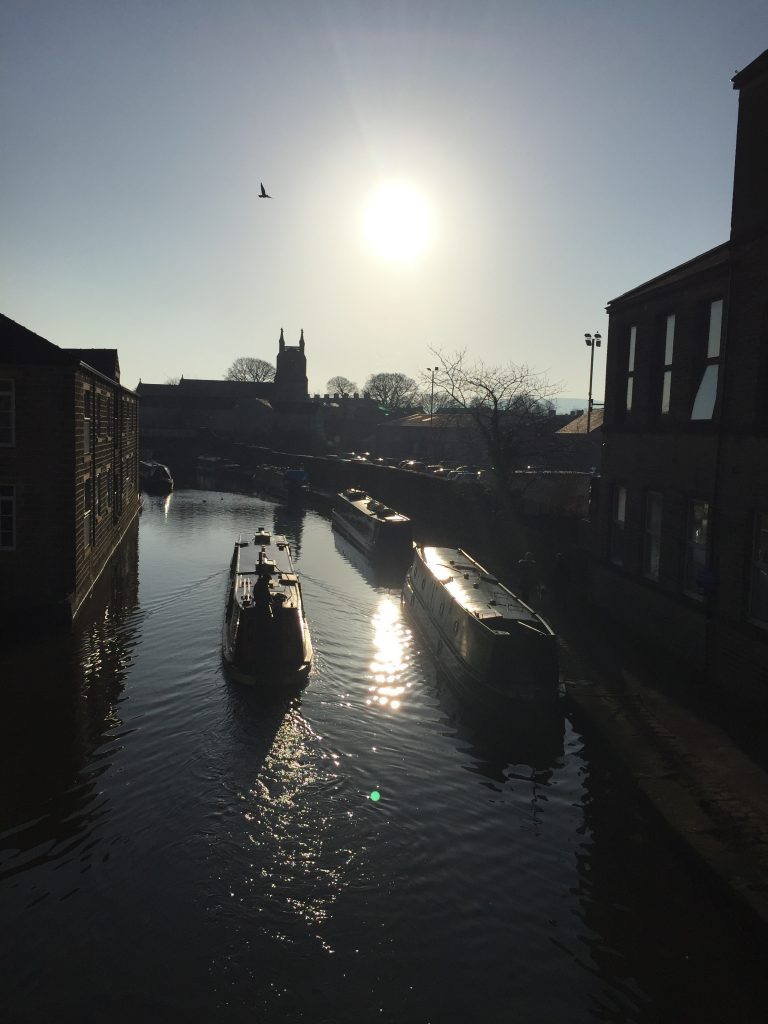
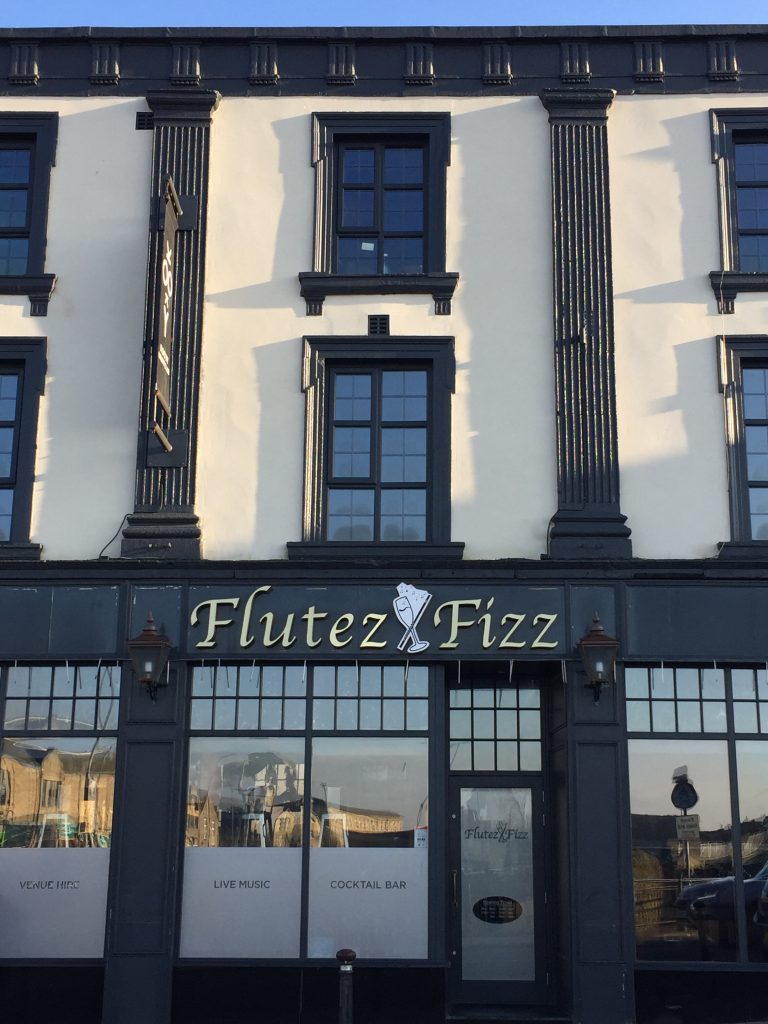
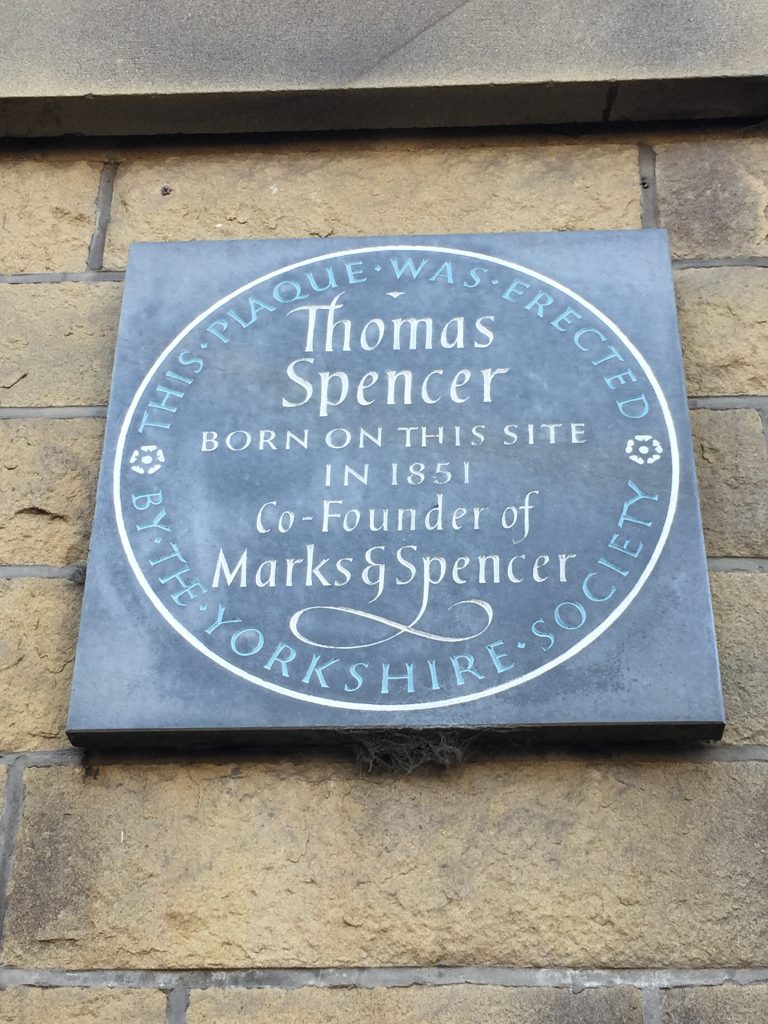
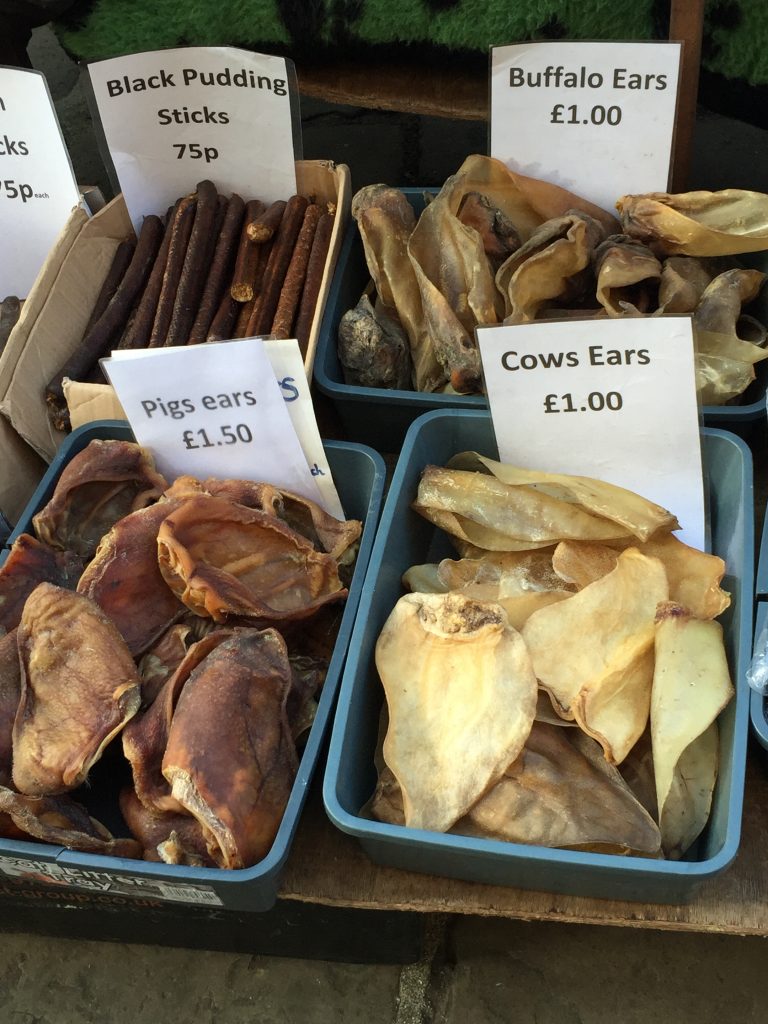
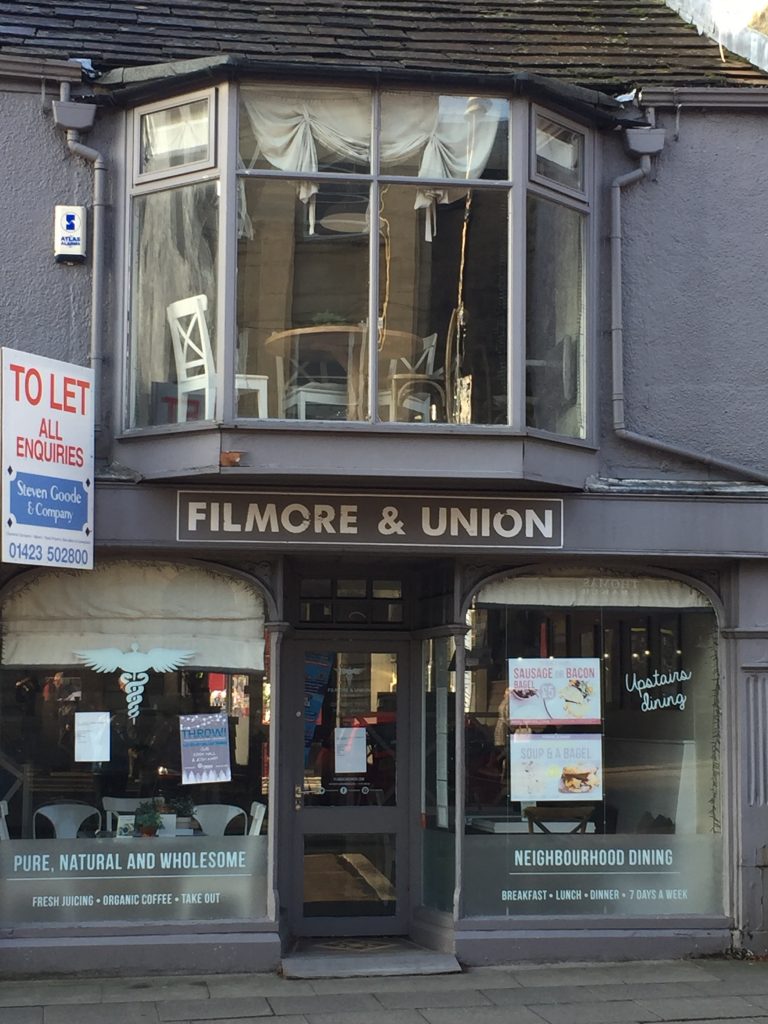
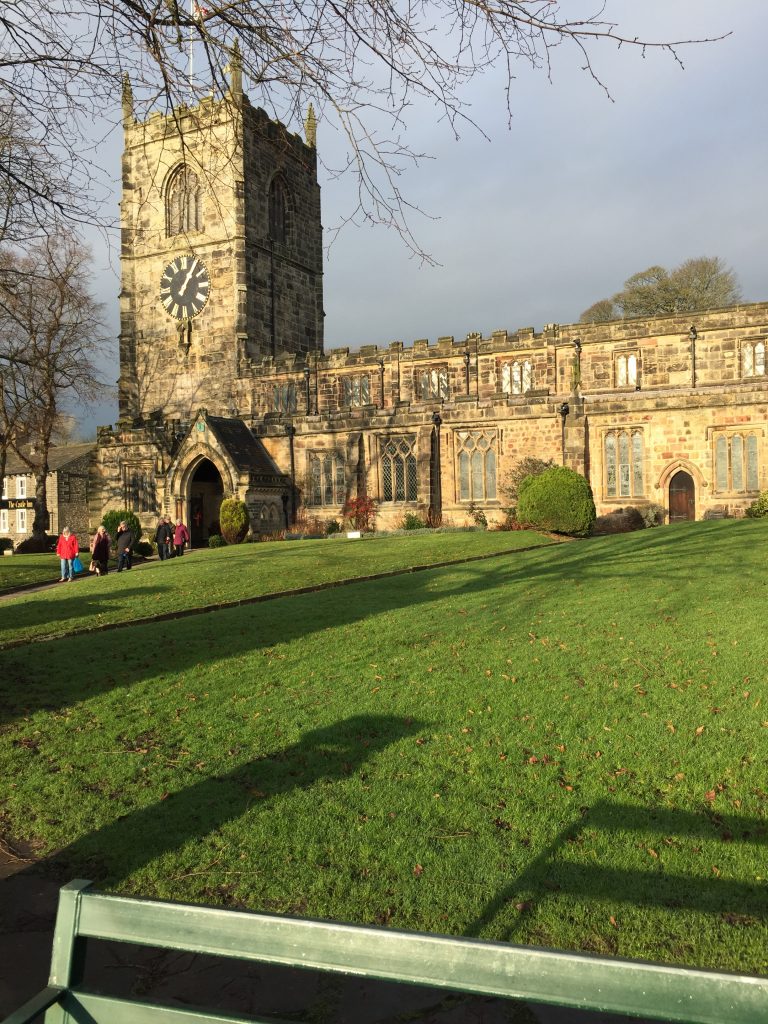

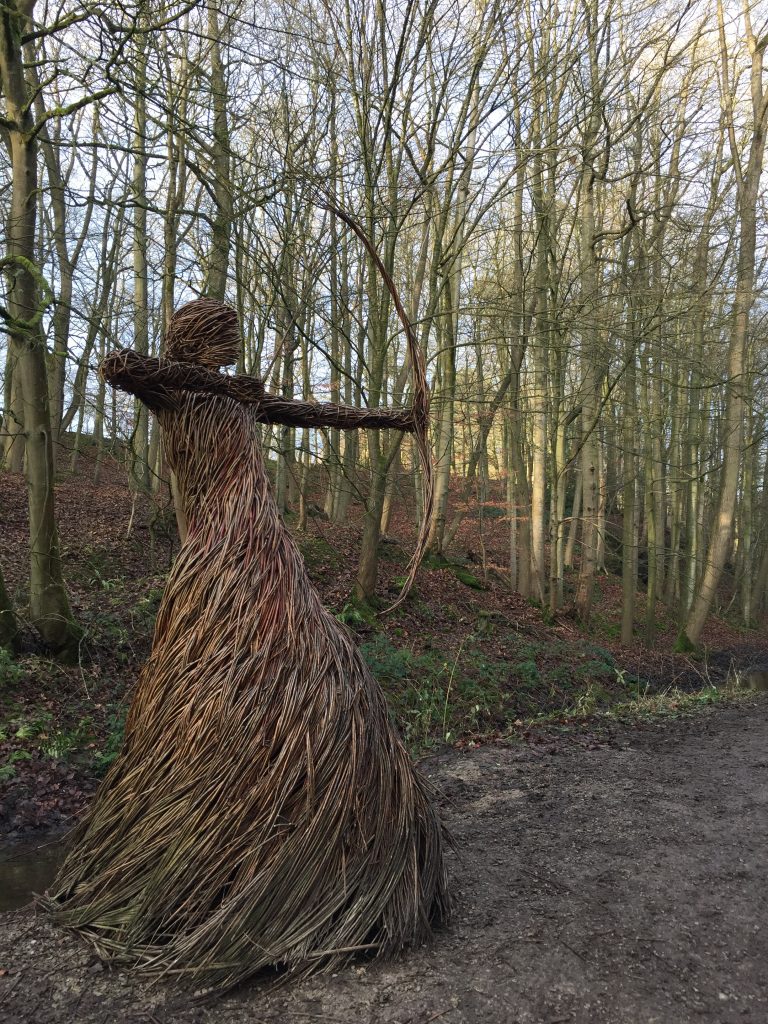
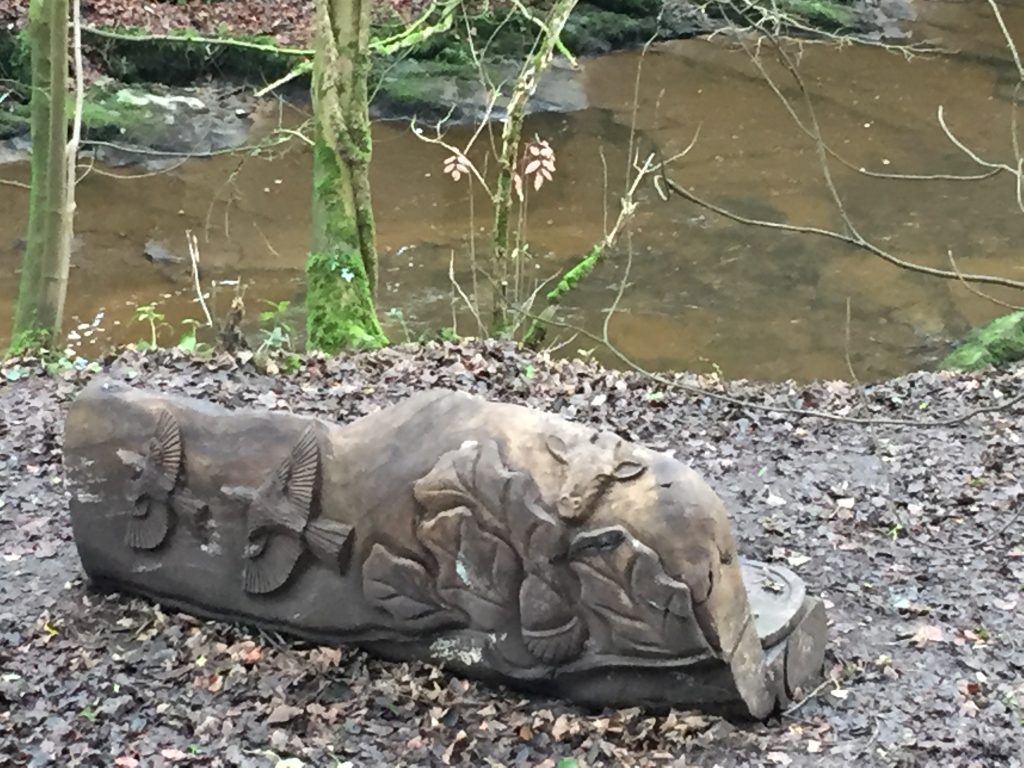
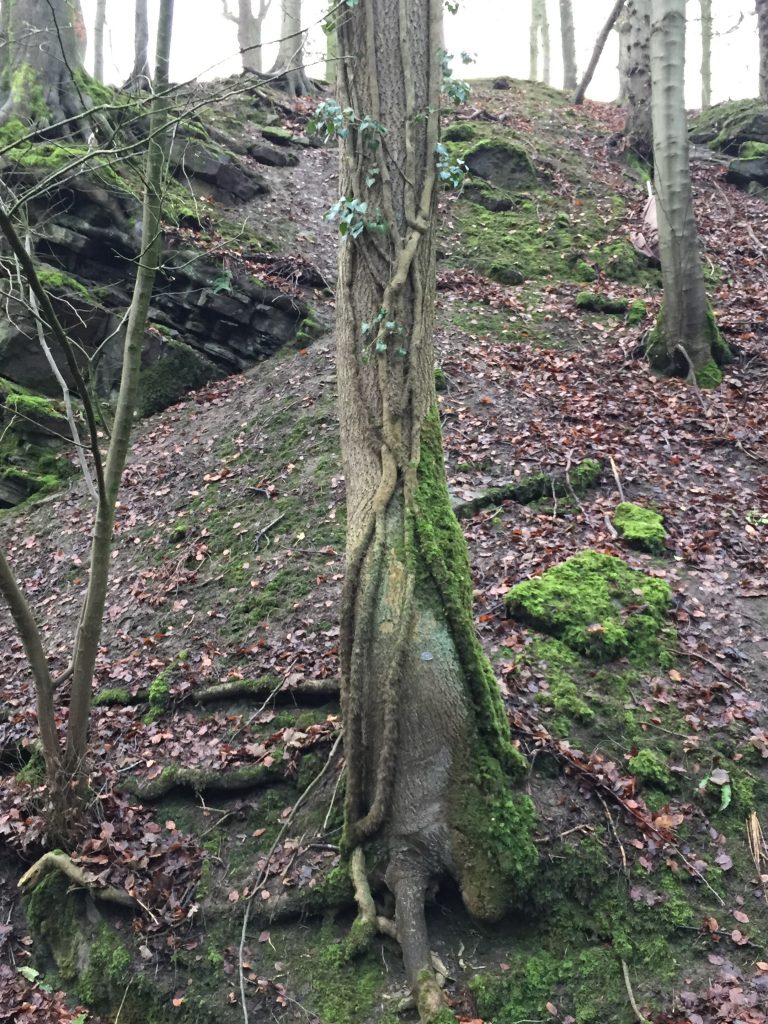
Recent Comments